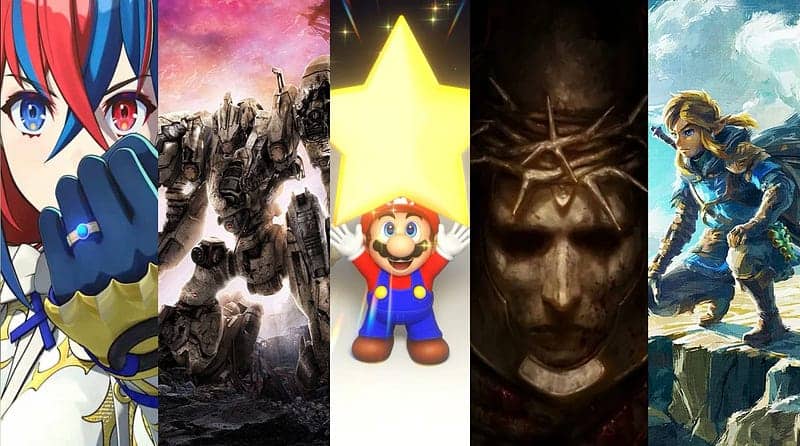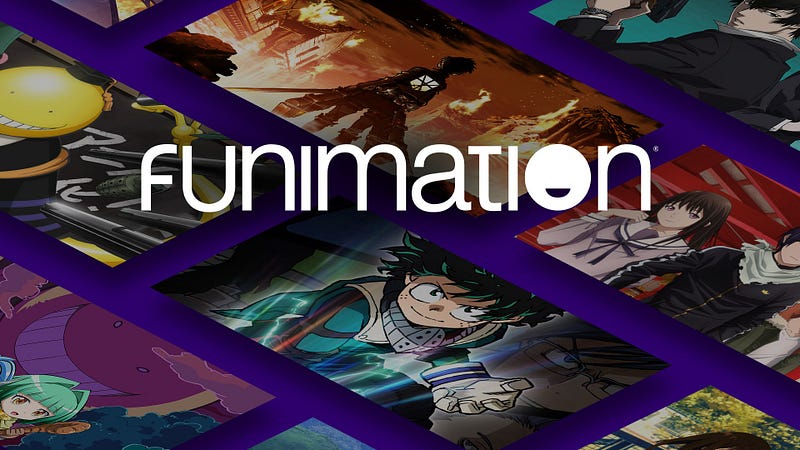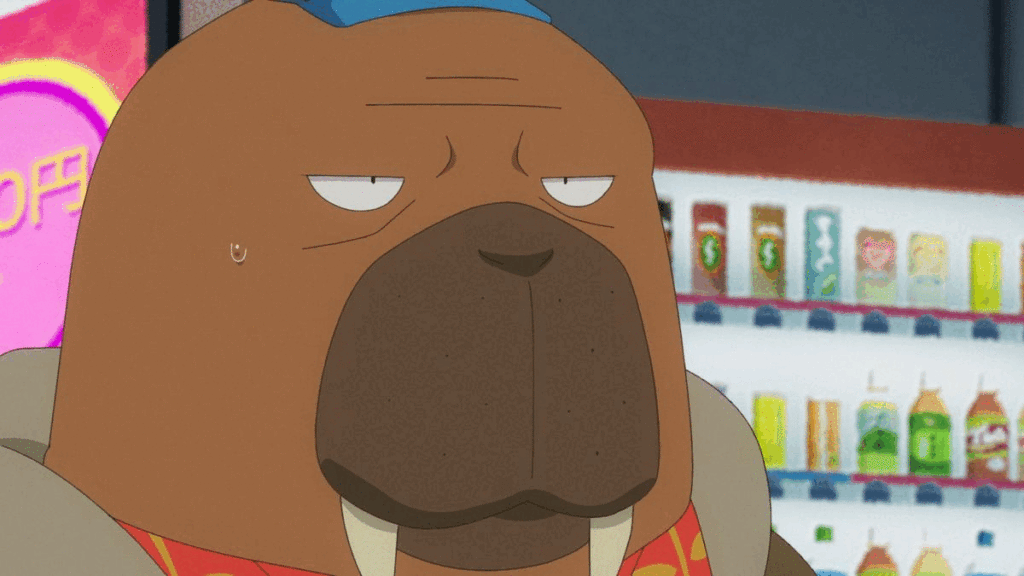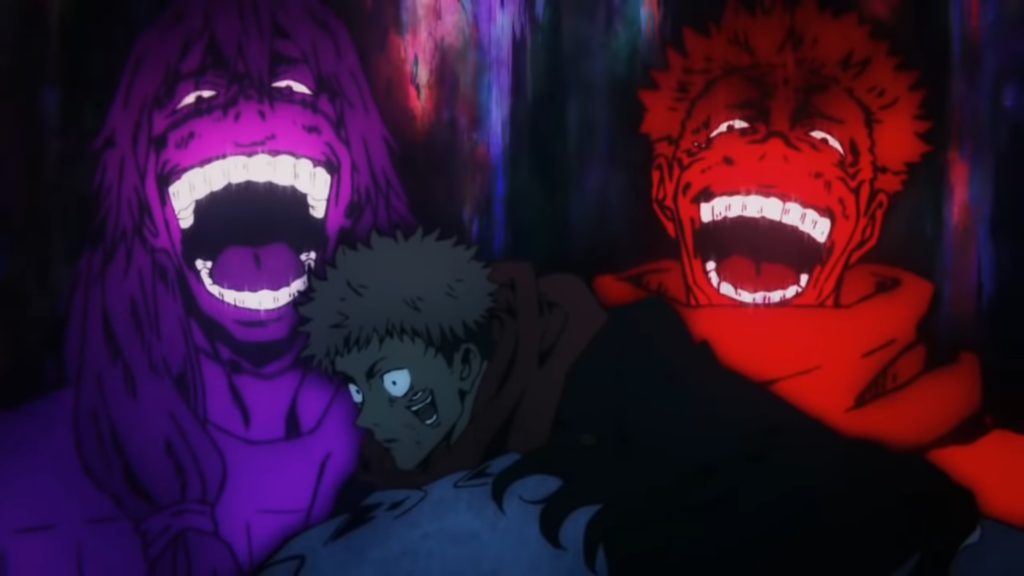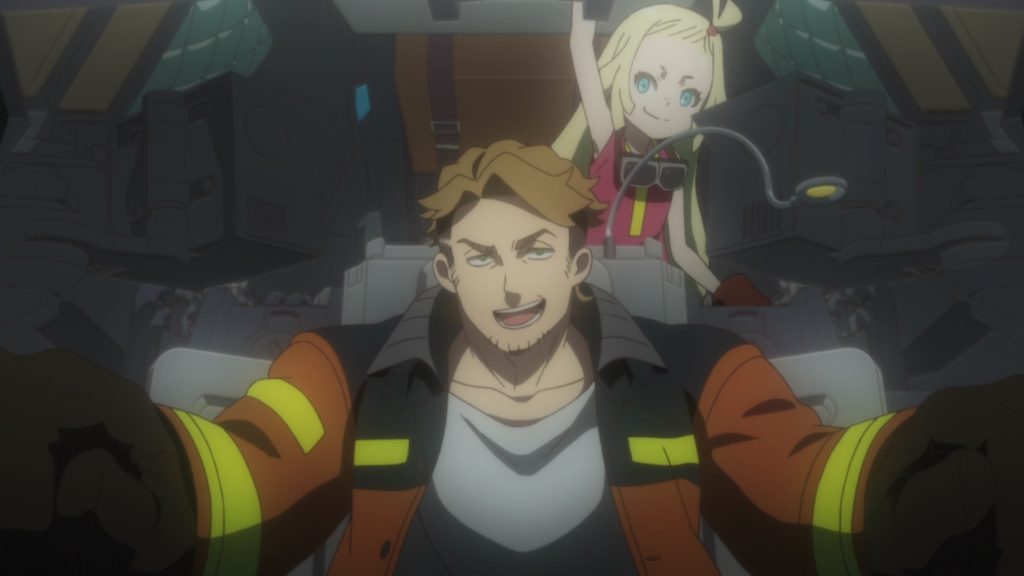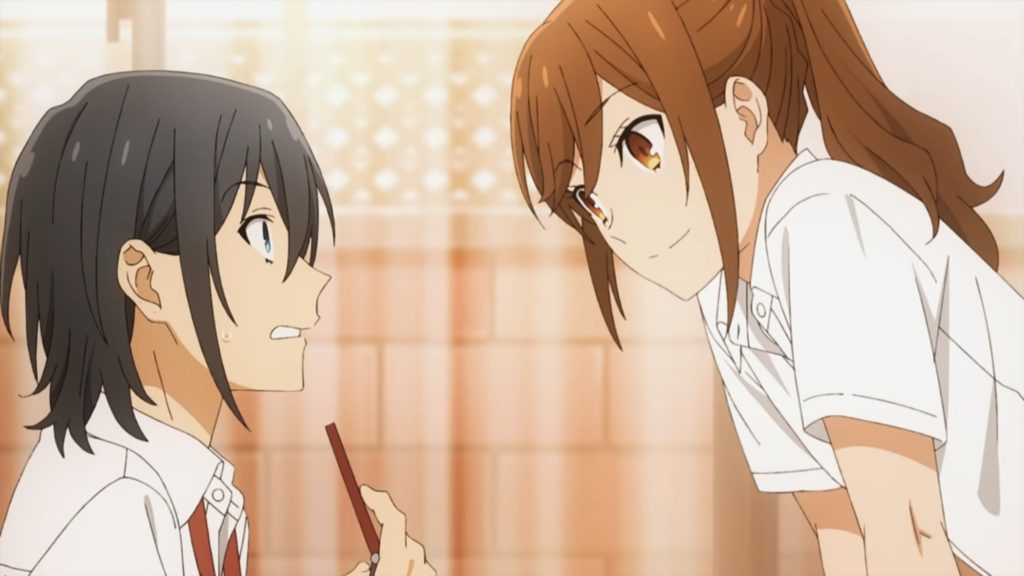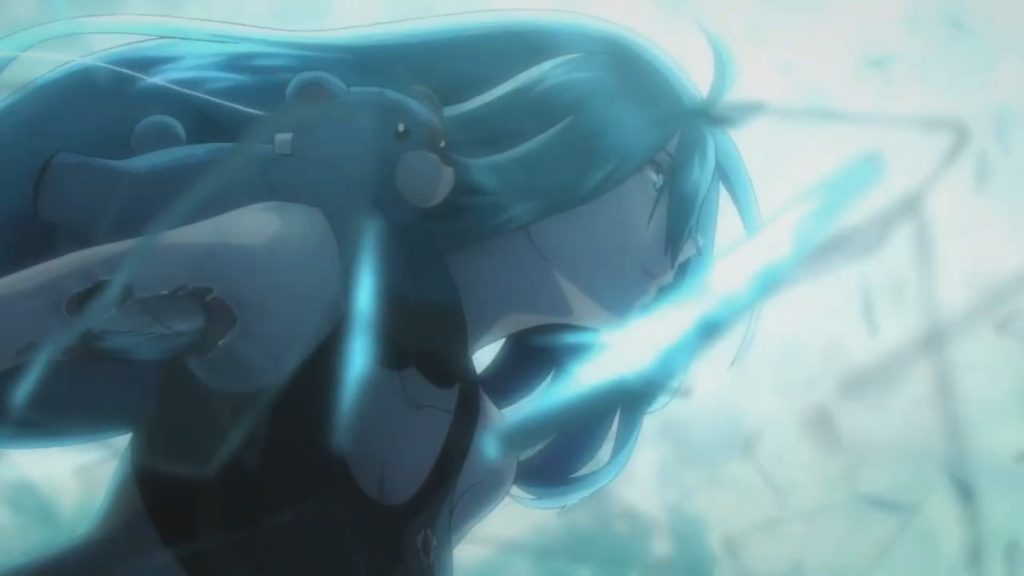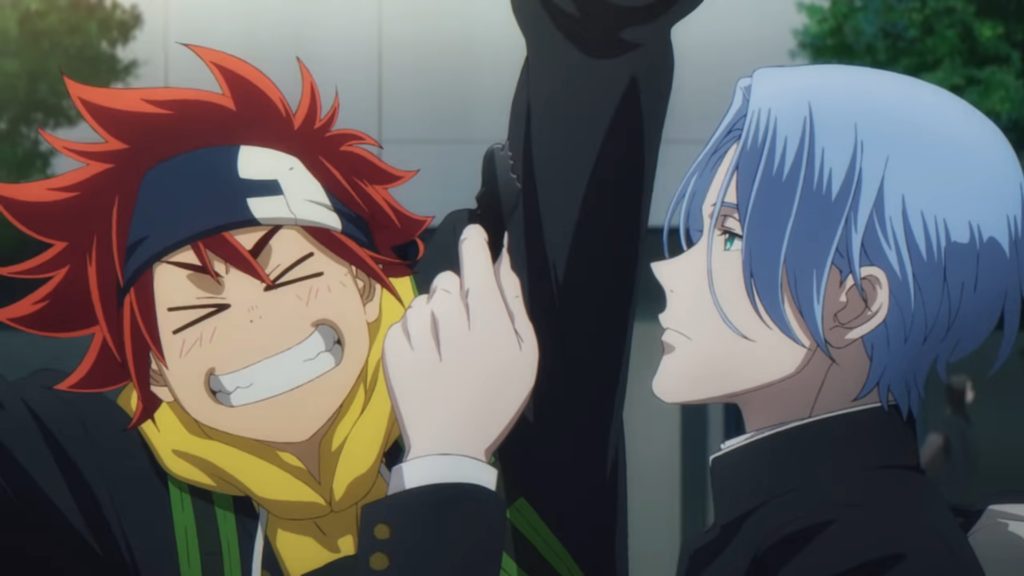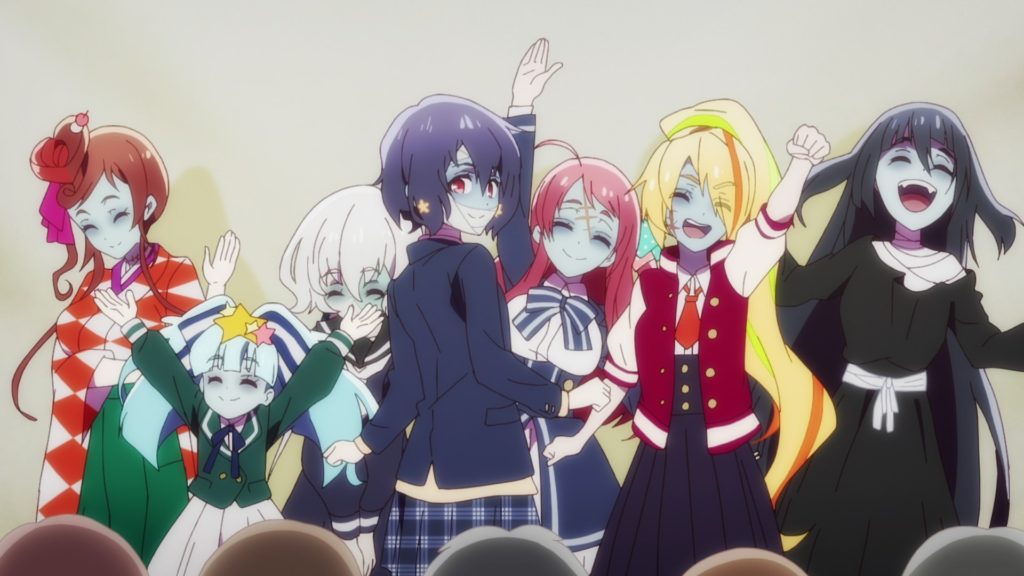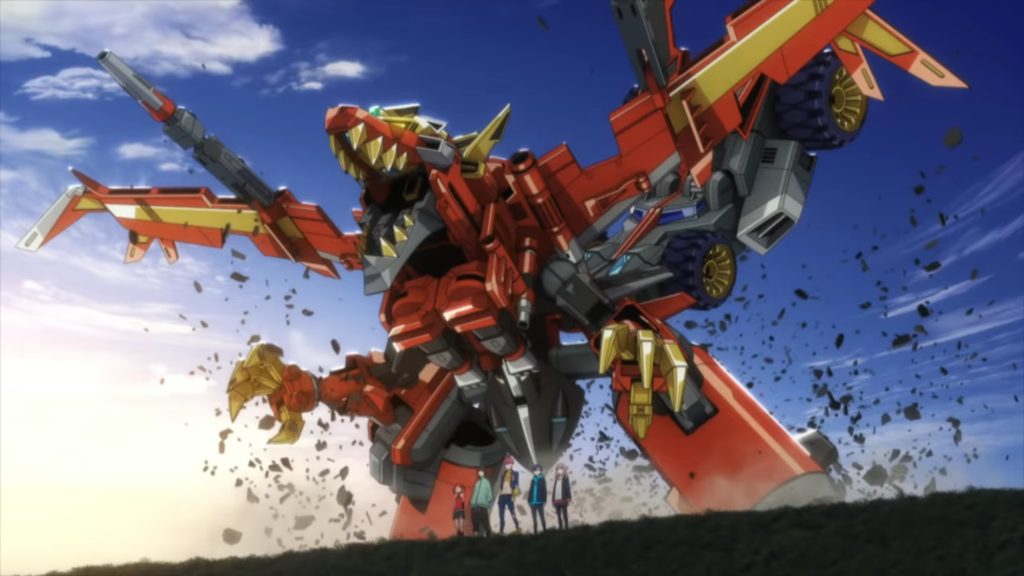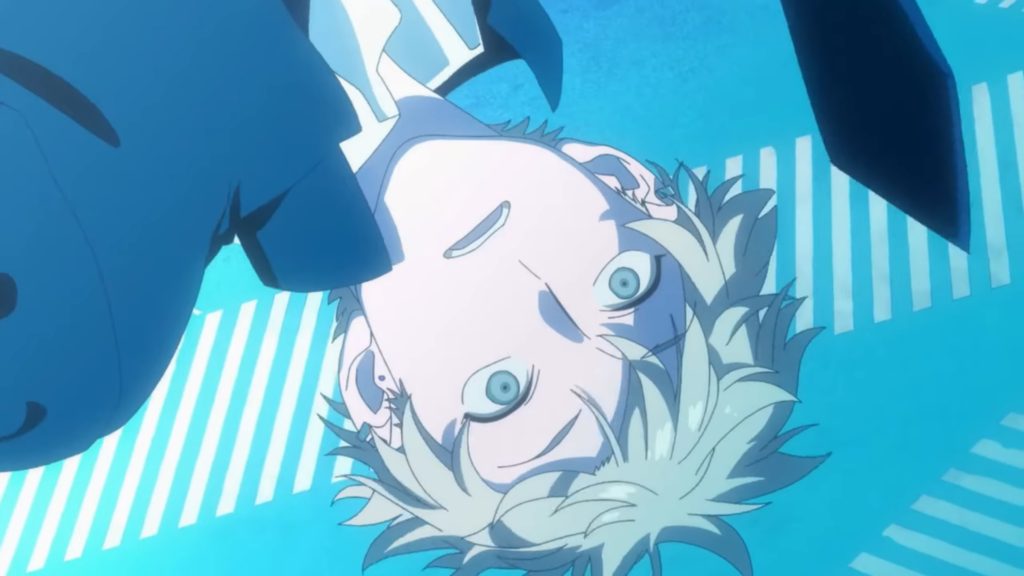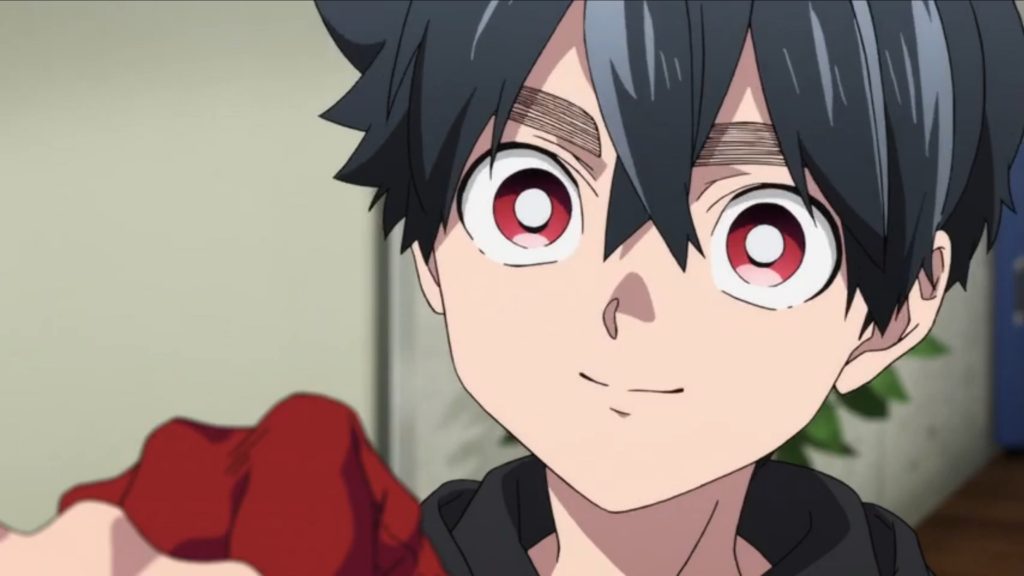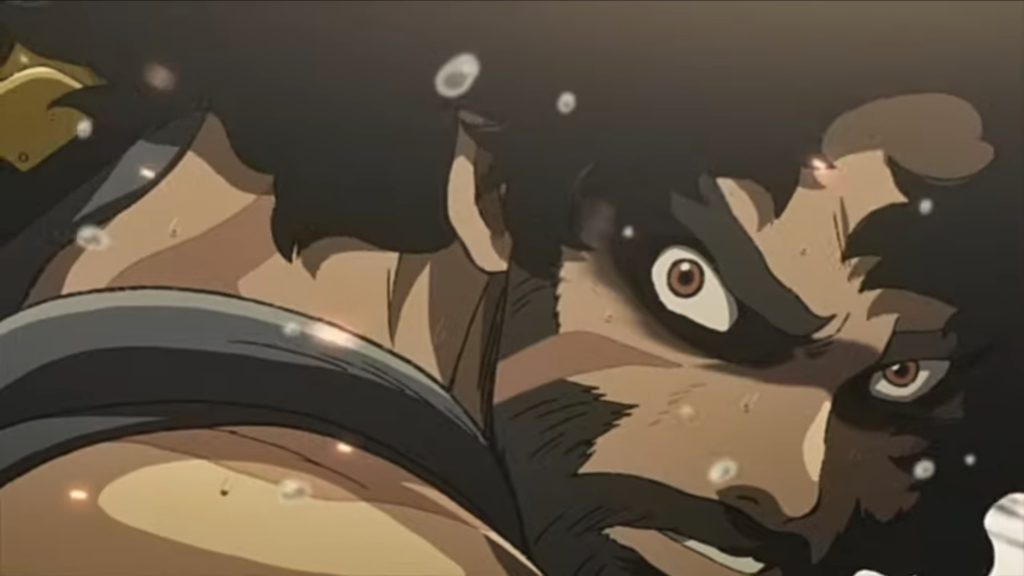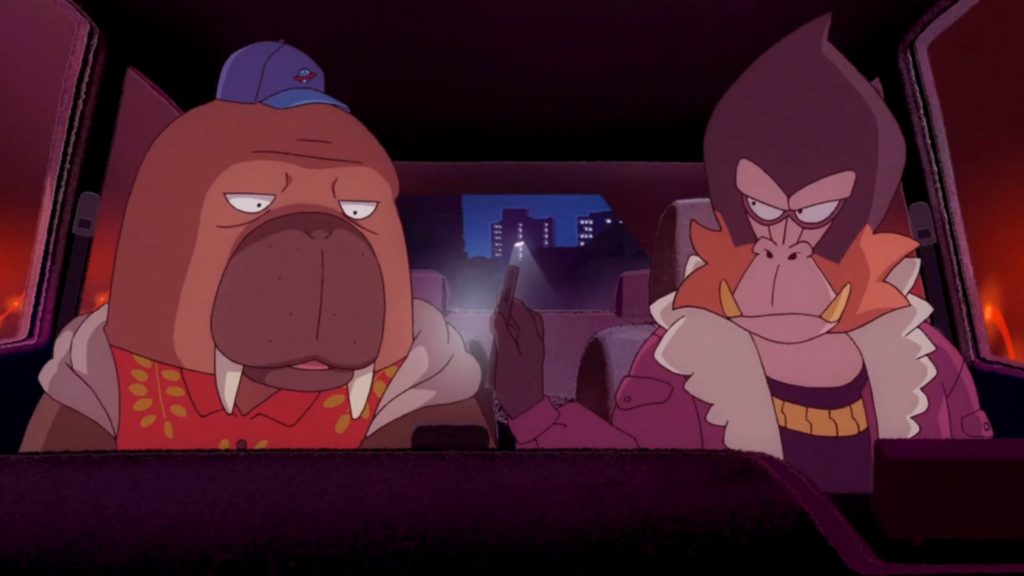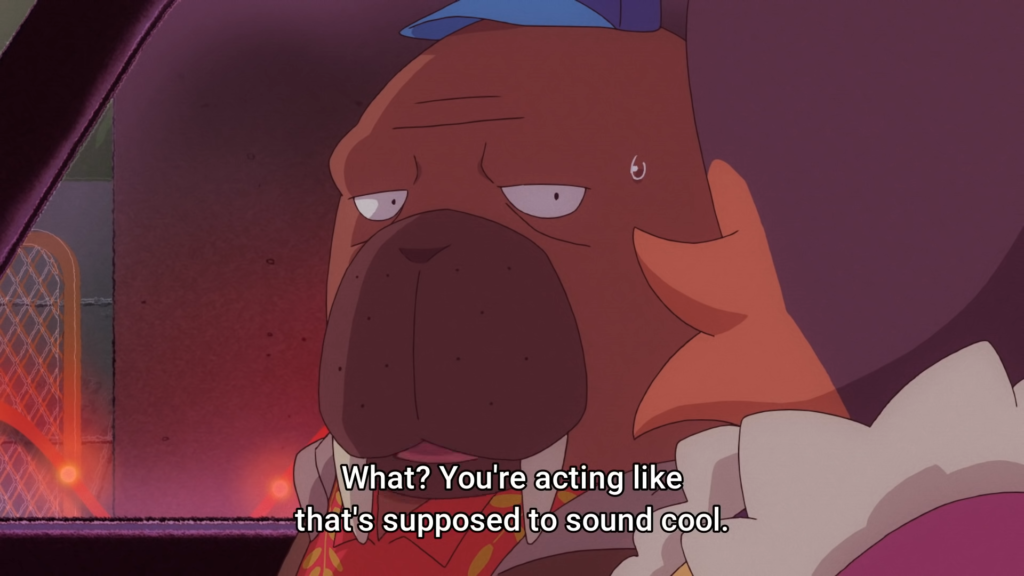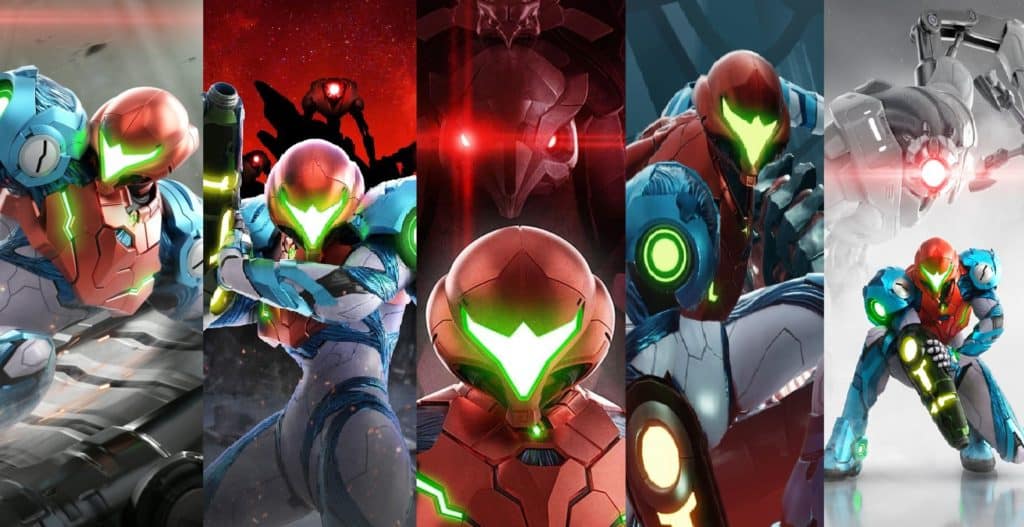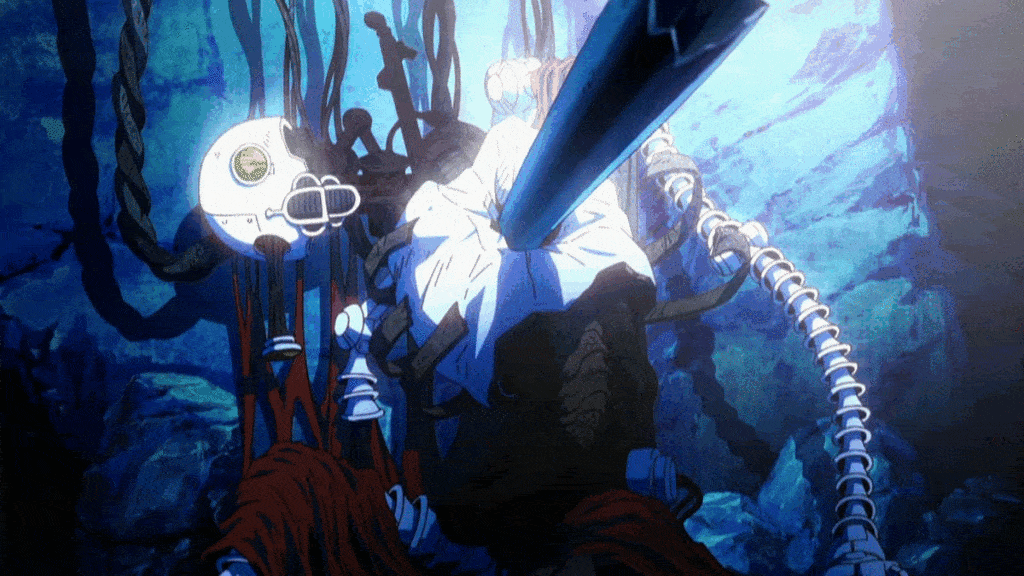
Welcome to part two of the Aether Awards, my annual check in where I rank my favorite content in one convenient place. This year, I reverted to the usual games to anime order, so if you’re new here or missed part 1, you can catch up below.
Dark Aether’s Top 7 Games of 2023
Depending on who you ask, 2023 was either the best or worst year for video games. Or to be precise, 2023 was a good…medium.com
This is the fifth year I’m running the anime portion back when I added it in 2019. Speaking of, I’ve officially hit five years at AniTAY and writing about anime. Before that, I had spent 2–3 years writing for Talk Amongst Yourselves, a subblog of what used to be Kinja during Kotaku’s Herbless Era. The whole writing thing happened during a very difficult time in my life when I didn’t exactly have the best support system.
I’ve been writing for a long time — seven years in fact — and now that I’m seemingly committed to the hobby, I’ve reached the point where I’ve started pondering where it’s all headed towards. I’ve written reviews, done essay length retrospectives, contributed words to various projects on the main AniTAY blog, and even published my first investigative piece over a year ago, all of which I’ve compiled into a personal list of best work under my Medium page. Basically, I’ve begun thinking long-term.
An Introduction to My Cabinet of Curiosities (Featured Work)
New to my profile? Not sure where to start? Check these out first!medium.com
Of course, I’m not going anywhere yet! This is still a way off, and I have no intention of leaving my current IT gig while business is good, but what I’m getting at is I’ve started pondering the future a little more each day. This was especially true in 2023, which was — to be perfectly blunt — not a great year for me, personally speaking. Despite taking a huge step back to work on my personal project and publishing seven articles, with three more pending later this year, it didn’t go quite as smoothly as I expected, experiencing multiple delays on my end as well as postponing or scrapping anything else I might have been working on.
Radiant Memories
The Complete Radiant Collectionmedium.com
Regardless, I learned a lot doing this project, including, prioritizing what I want to cover instead of chasing trends or views, understanding myself better by balancing my wants and needs and most importantly, putting my health first for my own sake as well as the quality of what I’m submitting. The thing is that I’ve been getting advice on the best way to approach my work since 2016. Some good, some questionable, and it took doing this retrospective to understand what it is I want to achieve with my writing and should have been striving towards instead of trying to appease everyone at once. In other words:
Now that I’ve gotten the personal stuff out of the way, let’s move onto 2023’s anime. Contrary to popular belief, I was in fact keeping tabs each season, albeit in a less involved manner here with my project requiring more than I had initially anticipated. Even if I hadn’t been away, for the first time since I started these awards, this was one of the easiest lists to put together. Simply put, I pretty much had already mentally written down my nominees a month before this draft went into production. Aside from 2–3 cuts, some small honorable mentions and an excruciatingly drawn-out duel between my #1 and #2 slots, there were no real issues with the top 10, save for the exact ordering.
That said, I still feel terrible for leaving you cut and dry most of 2023 without my opinions while I was away, so before we get started, here’s a supercut of everything I watched worth highlighting, in rapid fire succession:
2023 Recap!

Winter
Our recap begins with a trio of continuing series. Mobile Suit Gundam: The Witch from Mercury started off strong and crossed the finish line with flying colors for the most part, even if it did leave me wanting a bit more for the finale. I thought for sure it would make the main list, but maybe it needed a few more episodes to simmer for my palate. Otherwise, a true standout and easily one of the best of the year! My Hero Academia Season 6 was mostly a return to form after several less than stellar seasons — an entertaining pick up if nothing else. Blue Lock surprised me with its madcap rush to the goal line, or as I like to call it “hey dad, they finally made an anime about you!” It was on my shortlist, but just barely missed the top 10!
Tokyo Revengers: Christmas Showdown was an okay follow up, but the start of a slow downfall with the subsequent Tenjiku Arc later that year erasing any goodwill I might have had for the series (Really? You’ve been building up to this?!). Bungo Stray Dogs Season 4 was decent, although not quite as memorable as what came before. As for Season 5 later that year — I genuinely don’t know where to start. Aggretsuko Season 5 got a nice sendoff while screaming bloody murder. Trigun Stampede wasn’t really what most people wanted from a reboot — myself included — but that didn’t change my enjoyment with it even if I still think the animation company and art style weren’t a good fit. I wasn’t a big fan of the finale either, so it was cut from the shortlist.
The real surprise of the season was High Card Season 1, an original anime from the minds behind Kakegurui. A stylish and fist pumping drama filled with fast cars, slick suits and arguably the best ending theme of 2023, this cool customer didn’t get anywhere near the love or attention it deserved, yet its weekly capers and skull busting moments made for one of my favorite afternoon pickups. I’m so glad it got a sequel currently airing as of this writing and I can’t wait to see what’s in store for the gang.
Wrapping things up, Berserk: The Golden Age Arc — Memorial Edition got its long overdue English dub, and I had the chance to watch it for the first time in its entirety after having previously only finished the first film. What else can I say? Classic. It’s not on the list, but it was one my favorite things in 2023 despite not being of the year itself. Perhaps one day I’ll get around to doing some writing on the series…
Spring
While Winter was mostly playing catch up for me, Spring is where things started picking up. Mashle: Magic and Muscles proved you don’t have to be the biggest kid on the block to have a good time — just be ripped AF! Dr. Stone New World found its groove again, looking to the stars as it enters its final arc. Skip & Loafer was a lighthearted and neat new slice of life/romantic comedy. My 2023 AOTY got a delightfully charming pseudo follow up and interquel with Ranking of Kings: Treasure Chest of Courage, reminding me once more why it took home the top prize even with the smaller stakes, and Heavenly Delusion was a show. Couldn’t say what, but it was. Oh, and let’s not forget Osh–
Summer
Things cooled down for me around this time, but the season certainly didn’t! Fate/strange Fake: Whispers of Dawn took the series to my home turf of the grand ole US of A. Bleach: The Thousand-Year Blood War Part 2 turned in a serviceable second act, but I fear we are approaching the point where I lost interest in the manga. A man can only take so many battles in quick succession, which brings me to Jujutsu Kaisen Season 2 Part 1 — Hidden Inventory/Premature Death. I wasn’t quite as hot on season 1 as most during its initial airing, but upon rewatching it in 2023, it started to grow on me, so I was looking forward to its follow up. The most positive compliment I can give is had this been its only release, it likely would have ranked at #11. That is, until Part 2 — Shibuya Incident started…. more on that later.
Baki Season 2 gives the show a proper ending to the never-ending family saga of the Hanmas by beating up your dad. Kengan Ashura Season 2 came and went about what I remember from it with its nonsensical violence and corporate turncoats. Horimiya: The Missing Pieces was a fun, if somewhat disorganized sequel (interquel?). Not quite a second season, but definitely worth checking out all the same. The Duke of Death and His Maid returned for Season 2 with a mostly fun follow up. Golden Kamuy Season 4 got its long awaited finale following an unfortunate passing internally. While maintaining the quality of its predecessors, this season felt more like an intermission than a proper sequel for me. Given that next one is the last, I’ll assume its buildup for something special down the road.
Finally, Bastard!! -Heavy Metal, Dark Fantasy- Season 2, or to use its full proper name, Bastard!! -Heavy Metal, Dark Fantasy- Hell’s Requiem Arc — damn straight, I’m adding those creds! — returned to rip and tear some more fools. I had a review planned, but things fell through and I didn’t have that much new to add, so if you liked the first, you’ll like the second.
Fall
Closing the recap out, my 2023 runner up Spy x Family got a fun sequel and a shiny new boat in Season 2. I also didn’t have much new to add from before, so I left it off the main list. Shy brought superhero shenanigans to crippling social anxiety. MF Ghost tries to live up to its legendary Initial D legacy, not quite recapturing the spirit of the original — and more than a little objectionable with its female cast, even by its predecessor’s standards — but confident in its rival racing and engaging enough for those who live on the fast lane. After-school Hanako-kun was another not-sequel to a thing I liked from before — seriously, what’s all these specials this year?! Cold feet, I guess. Luckily, this one got a proper season 2 announcement, so hopefully more to follow these experimental formats.
Finally, no list would be complete without mentioning the biggest surprise of the season — Undead Unluck! Knowing next to nothing and expecting the worst from its synopsis, what could have been another flash in the pan action show ended up being one of the more comical, brilliantly animated and personality driven titles that I look forward to each week. A shame it didn’t qualify this round as it continues into Winter 2024, but rules are rules. However, if it can maintain its current momentum, I’m sure it will be getting its flowers sometime next year.
And that about wraps it up for the recap, but before we move onto to the top 10, we have some unfinished business, so I’ve added another new section this year. While I go fetch my instruments of pain, here were the not-so-great parts of 2023:
Dishonorable Mentions

Demon Slayer: Kimetsu no Yaiba Season 3 — Swordsmith Village Arc and Diminishing Returns
It is because it is a traditional, straightforward approach to the battle Shonen formula while adding in its unique touches that proves why it’s great. Simply put, it’s a really well put together show that manages to find its own voice through some breathtaking fights and a compassionate protagonist with a personal stake in his quest to turn his sister Nezuko back into a human after their family is slaughtered and the latter becomes a demon. It checks off a lot of the standard Shonen trademarks I look for while managing to make its own mark and occasionally even put some of the founders on notice. This isn’t the only Shonen on this list, but Demon Slayer is a nice reminder of what I love about the genre and one of two shows this year that prove you don’t have to invent or reinvent the genre to tell a compelling a story.
That was me five years ago awarding the first season #7 in my very first AOTY awards. My, how the pendulum has swung in the time since….
It’s my fault really for not beginning to see the cracks in its follow up film Mugen Train, a movie, while enjoyable on its own, wasn’t exactly anything to write home about beyond its aesthetics. While many have attested that Demon Slayer: Kimetsu no Yaiba has always prioritized spectacle over substance and that Ufotable is just playing to their strengths — although the recent Swordsman Village Arc is testing that theory less its fans can tell the difference — I think it’s easy to forget the story’s origins.
A simple charcoal seller turned swordsman following the slaughter of his family, a world of unending terrors and the power of sibling bonds, these are all established elements that feature prominently, frequently referenced in one form or another all the way to the latest season. I’ve heard arguments in bad faith downplay these elements, even when the story goes out of its way to reintroduce them as recent as the finale of this season, but I think this further highlights the disconnect between the action and what the story is trying to communicate.
Taken at face value, the story clearly had thoughts and pathos it was building towards. To subsequently ignore what was preestablished for the sake of aesthetic is an open admission, nay an unwillingness to meaningfully engage with the content presented, which is to say is highly counterproductive to any conversation about the subject, if not the medium — unless your only goal is to look at it for its commercial value. Not that it matters, as the industry is more than happy to nickel and dime its fans out of their wallets for the privilege of watching a recap and maybe one new episode of a show you’ll end up watching again on TV anyways.
The other recurring problem is that with each subsequent season it never leads anywhere else beyond another villain of the week. It keeps undercutting itself with entire episodes being devoted to nothing but fights and a five-minute empathy flashback because they bullied VOTW or something. Or as I like to put it, Tanjiro rolling up a newspaper and going *whack* “bad demon!” Season 3 was the worst in that regard, but this was the first time it managed to simultaneously bore me and put up my hands in contempt with a baffling, unearned last-minute twist that was never even hinted at being a possibility or reeks of a writing hole someone failed to write themselves out of.
Personally, I don’t see it recovering from this in my eyes. But hey, look on the bright side. Maybe if you behave yourself, they’ll let Nezuko contribute next season.
Jujutsu Kaisen Season 2 Part 2 — Shibuya Incident Arc, MAPPA’s Meltdown and The Topic of “Newsworthy”

There’s no easy way to talk about Jujutsu Kaisen’s Shibuya Incident arc without acknowledging the various opinions floating around, with quite a few people on the AniTAY blog having differing levels of thoughts on the subject. Whether you think it’s the greatest thing since slice bread or the stalest form of white bread imaginable, it’s safe to say everyone has an opinion and there is very little room for me to condense this into a meaningful conversation without addressing some of the story’s “choices.” For that reason, I am considering publishing a separate article at a date to be determined. In the meantime, here is the cliff notes version for context (emphasis mine):
The Shibuya Incident Arc sees Jujutsu Kaisen at its most action-packed, but the relentless bombardment of fight scenes ends up doing the characters, pacing, and story a disservice. If it’s spectacle you seek, look no further than these episodes. If you want action to service the plot and characters rather than the way around, this arc leaves a lot to be desired. — IGN
I’m not saying that a show isn’t allowed to suddenly switch up its pacing or drop a whole mess of death and drama on its cast. What I am opposed to is sitting through a weekly television series for half a year and asking myself repeatedly, “What is the point of all of this?” Why introduce all of these heroes and villains and spend so much time building them up, only to have their unceremonious deaths serve as little more than “Oh Snap!” moments for the “real” antagonist that barely even gets a proper introduction before the series is over? Why spend weeks upon weeks showcasing all of these fight scenes, which, while cool on their own, do not add up to anything beyond “None of it mattered, since that brand new villain that none of you care about yet planned this whole thing with his Evil Brain Monster Powers, and our heroes were screwed from jump”? — Anime News Network
Shibuya is kind of a mess. It wants to be this huge, world defining conflict. The sort of thing that the rest of the story revolves around. And in some ways, it does accomplish that, the status quo has definitely changed after this arc. But where Hidden Inventory was tight and focused, Shibuya has too many threads, tries to do too much, casts its net too wide, while not having developed things enough prior. It doesn’t feel earned the same way Hidden Inventory does because half the characters are either new or given unsatisfactory resolutions. Think of it like this: Across the arc the villains defeat more villains than the heroes do. It’s as if the entire arc exists to tear Itadori down, rather than build anything up. — Star Crossed Anime
What I do want to focus on right now and what I feel is of much greater importance is the topic of MAPPA, including but not limited to the disturbing number of reports of workplace abuse, overworked staff and a production so broken that not only did it bleed over into the show itself, it prompted many of its staff to openly post their frustrations and deteriorating breaking points in now deleted posts, even while the show was still garnering praise at work that was only “30% of the intended vision.”
To be clear, this isn’t directed at the team, who obviously “moved mountains” to turn in something each week, regardless of personal feelings. This isn’t even finger pointing at fans who basically cheered as staff literally worked themselves to death with increasingly morbid consequences if their wording is any indication. But what about the publications, outlets and journalists who not only lavished praise for JJK S2 in their own annual roundups, but have still not addressed the elephant in the room?
Let’s backtrack a little. During the Insomniac breach of last year, there’s been a lot of debate regarding the journalistic responsibility of covering what is newsworthy for the general public and what that actually entails. It’s an ethical and moral line with no clear one fit solution, and it would be naïve of me to admonish the players of a system where the rules are clearly not in their favor. As someone trying to break into the field, I understand most of these folks have their hearts in the right place, but if you are of the party that believes the public has a right to know what is now publicly available information, then why are so many of these same places not addressing the MAPPA situation directly or holding them accountable?
If it’s a lack of knowledge because they are “video game sites”, well, then, how are they keeping up-to-date with the anime industry as the news happens? If the issue is it’s not “newsworthy,” then explain to me how a site like Polygon determined what we really needed to know about was fictional romances, Gojo fan shrines, Usher cosplays and licensed TikTok music? You’re telling me this is more newsworthy while their own audience is somehow more knowledgeable about the situation than their own staff or editor? Or how about the fact that four major outlets not only put the recent season on a glowing pedestal and somehow failed to even reference the situation brewing, including Kotaku who is a sister site to i09/Gizmodo that reported on the issue while their AOTY list couldn’t bother to throw up a link despite doing so for a separate but relevant issue with Mob Psycho 100 III the year prior?
Call me crazy, but maybe, just maybe, if you’re going to ask the industry to do better, then shouldn’t the ones asking lead by example and report what’s newsworthy? Even if we assume lack of expertise, it takes two seconds to put up a hyperlink elsewhere. It’s information already out there, it doesn’t cost you anything, simple. Unless of course, there is a reason you might not want people to know.
For example, if the second season and beyond didn’t quite fit the narrative you thought you understood? Or maybe you’re a bit embarrassed that the new material might contradict some of your earlier observations and are still processing it? No, that’s preposterous! No decent outlet would deprive your audience of newsworthy content for the sake of the algorithm, right? No respectable journalist would put favoritism over their readers by not only being intimately familiar with the source material as well as the anime while the animators of said material are literally on the brink of a mental breakdown or worse, would you?
As of this writing, only IGN has recently acknowledged the falling out in MAPPA in the review above, though that may be more on the part of the author who took the time to reference it than the company itself. Still, I’m a big believer in second chances, so here’s my proposition. For those remaining who have yet to address it, if you still have any integrity left, you’ll have another chance in early March to right this ship, depending on the outcome.
Ideally, nothing of consequence happens and it’s just an ordinary day. If that’s the case, I’ll leave you to your own devices for now. However, if it pans out the way I think it will and you choose to remain silent in your obligatory flattery, that’s fine. I know you have to keep the lights on, even if it means playing ball with the SEO beast. But your readers might not be so charitable, and that’s fine too — at least we’ll know where your priorities are.
Lightning Round!

Tomo-chan is a Girl! was a pretty mid show for a title with such prehype built around it. Not bad enough to make the “Tomo-chan is a Disappointment!” joke, but certainly not great. In/Spectre got a Season 2 for some reason for another helping of detective make believe and long-winded exposition. Ayakashi Triangle got a “nope, imma head out” reaction while still smelling like the rotting garbage I had stepped on. KonoSuba: An Explosion on This Wonderful World! is proof that not every character is destined for main character status in an otherwise boring slog. My Home Hero is the perfect crime of how to fail upwards.
The Ancient Magus Bride Season 2 forgot what made it special in the first place with a meandering abuse tale that takes too long to go anywhere. Eden’s Zero returned for Season 2 and then quietly got hurled into the sun. Mushoku Tensei Jobless Reincarnation Season 2 brought controversy to the forefront — again. Rurouni Kenshin (2023) didn’t need to exist, for obvious reasons. Helck supposedly got good…. Too bad it still sucked for me to stick around! FLCL: Grunge is another sequel no one asked for. On the plus side, at least it’s over now!
One Piece Season…… Er, Wano showcased the triumph of aesthetics over themes and further proves that anime was a mistake with its insufferable pacing and fanbase demanding more. This was the last straw for me — no pun intended — as I finally bid adios to the series that once brought me joy turned into yet another commercial brand fishing for views while its creator enjoys the spoils without repercussion. But those are stories for another day as there are more pressing matters to attend to.
Last, and certainly the weakest link, Tokyo Revengers: Tenjiku-hen retaught me the meaning of my favorite ex-coworker’s water cooler introduction — “it was good, until it was stupid.” Pacing issues aside, this was possibly the worst way to end after spending two whole seasons building up this Machiavellian-style villain, only to give him the most uninspired, predictable backstory imaginable, followed by an abrupt conclusion so ridiculous I nearly spilled my drink in laughter! Now, if you’ll excuse me, I’m about to hit 60 on the freeway…
/media/e601635f22e3b0e14ec97e5556f368bf
Apologies for the delay, just packing up my neat little toys — you have no idea how hard it is to maintain these things! Pray that it be the last time I have need of them. And without further ado, the main event:
The List!

Rules and Guidelines (Disclaimer)
***As a reminder, titles that completed or ran for the majority of the qualifying year are considered for this list, as I don’t believe in handing a final verdict without seeing the finished product. No need to panic, I’m not about to change the rules on you or erase a season’s worth of content! That means no cutsies just because you’re an elf. “Now go on, back of the line!”
Shows like Undead Unluck and The Apothecary Diaries (which I haven’t watched yet!) will qualify in 2024 or their year of completion. Movies, OVAs, and specials are permitted, though none made it in. I have a good reason this time — I didn’t watch any anime films in 2023! Unless you count Spider-Man… (Sorry The Boy and The Heron)
And as a final, FINAL reminder, all opinions referenced in this list are mine alone. If I haven’t already mentioned your favorite after this point, I likely didn’t watch it, forgot I watched it, or didn’t have any significant thoughts about it to devote words to it in the previous sections. And if my picks happen to differ from yours, no worries! Our team of experts and lab rats ran a series of rigorous tests and experiments and have confirmed with 100% scientific accuracy that I am indeed not you.
So, after much debate, a few too many after hour drinks and an unrelated incident involving a folding chair, here it is — my Top 10 Anime of the Year. Enjoy!***
10. Hell’s Paradise

Having just addressed the MAPPA meltdown and subsequent coverage (or lack of), the irony of kicking this list off with… a goddamn MAPPA production is not lost on me. It’s not even the last as we move further down this list! While there is no denying that the studio likely has some bad actors above given its mismanagement throughout Jujutsu Kaisen Season 2, which probably points to the larger issue of the anime industry as a whole — no “clean hands” in this business, etc., etc. — the larger controversy surrounding that production and, according to some of its own staff, unwarranted praise given how rushed and unfinished the final product was left the rest of their other projects somewhat forgotten on a lot of year end lists — well, except Attack on Titan, but that show doesn’t need anymore help!
Rather than continue to belabor the point more informed individuals have reiterated on or invite further speculation on what goes on behind closed doors, I’d rather turn my attention with a title that managed to surprise me with its intricate characters, otherworldly setting and, against MAPPA’s overworked schedule, spectacular presentation to the very end.
I’m talking of course about Hell’s Paradise: Jigokuraku which follows the ronin ninja turned death row inmate Gabimaru, a ruthless killer yet loyal “wife-guy” who at the beginning of the story is content with death until his executioners find out he’s much harder to kill than expected. Having been convinced by executioner Sagiri that he values life more than he is letting on, including his love for his wife, she offers him a chance at a full pardon in exchange for completing a dangerous mission for the government — bring back the elixir of life from Shinsenkyo, an uncharted island full of monsters and other mysteries.
Of the three “Dark Trio of Shonen” that have gained traction and, in a comically brutal twist of fate, have had adaptions covered by MAPPA — yes, I know, it’s going to show up a lot this year — Hell’s Paradise takes the well beaten path of most conventional Shonen. Intense fights, honor and friendship, a force for good, and so on while making one small, but significant change that recontextualizes the story moving forward. As the emotionless “Gabimaru the Hollow” dives headfirst into the dark underbelly of assassination, his undying love for his wife proves to be more than meets the eye at first glance.
Forgotten memories, emotions and even his own humanity are challenged as the realization of Gabimaru’s heart becomes one of the most compelling elements in between the blood showers, unspeakable body horror and twisted takes on spirituality that emerges from Shinsenkyo’s darkest corners. While the island of Shinsenkyo itself plays host to all sorts of nightmare fuel, its take on Buddhist symbolism and Tao philosophy makes it one of the more memorable backdrops to lay the foundation on for a battle action story.
Just as the promise of eternal life draws attention from those who would seek paradise, its intimidating yet alluring wildlife and ecosystem feeds off the unfortunate drifters who find themselves stranded on a literal hell where even death loses its meaning after several days. When its inhabitants start entering the picture, it paints a beautiful yet horrific cycle of life unending, further layering the story’s duality between heaven and hell as the remaining participants are forced to cooperate temporarily while confronting some uncomfortable truths about themselves.
Speaking of participants, ADR director Mike McFarland led this expedition to hell for its English dub. Alejandro Saab voices the cold and dutiful ninja Gabimaru, chipping away at the character’s exterior with a such a ferocity of seriousness and fear of a man with nothing to lose but his heart as his brutal training and survival instincts kick in. Unlike a lot of other Shonen protagonists, he never comes across as entirely “cool” with his self-isolation reflecting inner darkness, and Saab’s performance highlights the character’s warring states between his Hollow self and the loving husband personas as his identity crisis sees him play loyalties to his clan and the one waiting for his return.
Marisa Duran provides the voice of reason in Sagiri, challenging the notion of strength through the show’s examination of femininity and tradition. Given the show’s willingness to provide contextual commentary on social issues through the period, Duran’s delicate balance between warrior, executioner and eventually, friend bridge the gap between modern heroine interpretations and the story’s history through a combination of professionalism, duty and empathy.
Jill Harris plays the bubbly yet deadly Yuruziha, a kunoichi who deals in poisons just as effectively as her spoken words. Her laid-back speech and nonchalant attitude towards certain death provides a nice counterbalance to the show’s seriousness through comedy while hinting at something more as the character’s questionable views of loyalty are left unfiltered near season’s end. Reagan Murdock’s Shion captures the master swordsman’s tough mentorship and logical analysis of the situation as the circumstances change and his past regrets come to light while Cassie Ewulu’s Nurugai adds a dash of youthful innocence and honesty despite the doom and gloom of the setting.
Last, but not least, Ian Sinclair and Michelle Rojas play the devilishly cruel duo of Ju Fa and Tao Fa, the male and female avatars of the antagonistic Tensen. Their “divine” origins and vicious indifference towards the island’s inhabitants and its visitors is further exacerbated as they toy with their new playthings before turning them into plant food.
Between the grandiose of the Tensen and the down to earth nature of its human cast, Hell’s Paradise once again proves that there is more to Shonen than spectacle meets unfiltered violence. Though only time will tell if Season 2 will live up to its strong foundation — or if MAPPA will treat its workers better after this — its heart is undeniable. After all, “accepting one’s emotions is not a weakness — it’s a strength.”
9. Buddy Daddies

Original anime can be a double-edge sword. On the one hand it guarantees everyone is on the same page from day one as it guarantees no predetermined assumptions on the part of the audience beyond what is given. On the other, the ambiguous nature of an original project with no expectations also carries a greater risk on a “return on investment.” Whether it succeeds or fails is often on the shoulders of its creators and biggest champions or advertisers as opposed to the pedigree of an existing story, author or publication/company doing most of the heavy lifting or “hype,” as is often the case when building media momentum.
In the five years I’ve been running these awards, it’s not every day I get to award an original project one of these — nope, I still can’t afford the physical trophies! On the rare occasions I do, I take great pride and pleasure in being able tell you all about it and celebrate these achievements instead of poking the undead corpse of yet another casualty of the anime industry. This year’s pick comes to us from P.A Works (Appare-Ranman!, Skip & Loafer), a company with an extensive history when it comes to championing original projects, and their latest title brought me to my knees with the gun-toting comedy duo of Buddy Daddies.
Set in the high-stakes world of assassination and modern-day domestic living, Buddy Daddies follows two hit men who, through a series of fumbles on their latest job inadvertently end up adopting the daughter of their target. Things escalate further as the two killers attempt to micromanage their day job and give their “hostage” something resembling a normal family life after they investigate her background and realize she has no place to return to.
Now, I realize comparisons to Spy x Family are unavoidable, especially given the latter’s excellent second season from last season, but hear me out. Whereas Spy x Family’s professionals turned parents carefully revolve around the clairvoyant yet doting Anya to navigate her newfound surroundings in increasingly clever and showstopping situations to drive home the point, Buddy Daddies takes a much more methodical approach to portraying the mundane reality in between its trigger-happy protagonists.
Compared to the expertise and precision of Spy x Family’s Loid and Yor Forger, Buddy Daddies’ Kazuki Kurusu and Rei Suwa are showcased as flawed both on and off the clock. They argue frequently about their line of work, bicker about household chores and how to best care for their newly adopted daughter, Miri Unasaka, who has her own share of hyper tendencies — much to their discomfort.
In the early parts, it’s quite hilarious, if not downright absurd, but where it finally started to morph into AOTY material was the slow progression towards developing the down-on-their luck trio of misfits into something profound. Learning about Kazuki’s previous relationship, Rei’s strict upbringing into hired gun and Miri’s — without giving too much away — questionable former homelife, each of the main cast come with their own share of baggage. As a result, they grow closer, learn to live and ultimately come together when their small slice of happiness is abruptly ripped apart and the decision is left on our surrogate parents to decide what’s best for all involved.
This awakening comes into further realization through the soft, but deadly stylings of ADR director Shawn Gann and the English cast and crew who bring their A-game as the show comes (literally) guns blazing into its final act. Emi Lo voices the adorably rambunctious Miri with the playfulness and energy befitting her character’s natural age. Child characters can sometimes feel like they are running on fumes depending on the situation, but Lo’s performance manages to bring out the best (and worst!) aspects of being a caretaker while teaching a thing or two to her titular papas who find themselves out of their league when suddenly thrust with responsibility.
Landon McDonald plays the flamboyant yet organized house sitter Kazuki who takes it upon himself to be Miri’s guardian early on. Though the more levelheaded and practical about the duo’s situation, McDonald’s take on the troubled family man with an unspoken past toes the line between gentle, outrageous and even decidedly swift whenever the situation calls for it, while also being the main source of laughs as the straight man to his co-stars’ characters.
If I had to pick favorites, my MVP would have to go David Matranga as the all-business but disheveled Rei. As the last and slowest to warm up to the idea of a life beyond killing while self-indulging in his hobbies (and likely depression), Rei represents the ultimate form of change and Matranga’s performance takes that level to its logical conclusion with some of the heaviest and unsettling moments in the entire show. In a year that was already filled to the brim with talented performances, Matranga stands out with Rei’s combination of social awkwardness and dysfunctionality, calculating and cool-headed composure holding a weapon and ultimately a vehicle for inner change as the character grapples with regret and feelings of self-worth put him on a path towards something greater than himself.
Now, I know I’ve thrown a lot at you and just want to know “okay, but is this better than Spy x Family?” Ultimately, it’ll come down to personal preferences whether you value the comedy or the story more, but that’s missing the point entirely. Instead, Buddy Daddies offers up a rare glimpse of anime with a complete story, set destination and a clear message. Free from corporate obligation or the shackles of sequel-itis (presumably), P.A. Works delivered one of their finest works yet, celebrating the artistry and creativity of the medium by telling an outlandishly funny, violent and, in my humble opinion, an incredibly provocative story about love, loss, family and even redemption through the will to grow together.
8. Zom 100: Bucket List of the Dead

Despite being the “horror guy” around these parts, zombie stories are probably my least favorite of the well-known tropes, largely due to the overabundance of them in media these days. Which is to say that I didn’t walk in with very high expectations for Zom 100: Bucket List of the Dead, a painstakingly vibrant and poetically modern tale of…. overworking, really? Hmm, that’s strange. I could have sworn I just got done lecturing about this a moment ago. Bear with me for one moment while I go double check on something…

Anyways, as depressingly ironic as it is for Bug Films to suffer multiple delays while working on a production about overworking, mismanagement and having to contend with incompetent leadership, by some miracle the studio managed to turn in a completed assignment quite literally at the last minute as I was finalizing this list! Though I’m not thrilled about having to talk about crunch, again, I’m not one to turn down a Christmas gift horse either, so let’s skip the formalities.
Zom 100 tells the story of Akira Tendo, a freshly employed office worker who learns the hard way that the corporate world kind of sucks. His boss is a jerk, his new coworkers are enslaved to the grind and slowly but surely, his will to live is kicked out of him as he stares aimlessly at his computer screen waiting for another pointless email or incomprehensible deadline, pondering aloud if he’ll be able to sleep in his own bed tonight. And then the zombie apocalypse happens, because why not?
Instead of freaking out about it, our unlikely hero comes to realize that he’s now a free man! After years of being denied the barest of life’s pleasures due to the constant pressures of the job, Akira sets out to make up for lost time and use this newfound opportunity to live his remaining days to the fullest by creating a bucket list for the end of days.
With the shift in zombie media leaning towards the human survivor’s stories whether it be drama, comedy or intense brutality, Zom 100 is one of the first to operate on something far more basic than most — sheer optimism. Given the subject matter, one would be forgiven if these elements sound contradictory, but where most stories would center around the unravaged nature and lawlessness of the new world our band of characters find themselves in as they fend off hordes of undead, Zom 100’s wackiness and carefree premise presents a chance for human connections and random acts of kindness to often be the dominant motivator most episodes.
Of course, there’s still the hordes of murderous zombies to contend with! While the emphasis is squarely focused on Akira and his growing band of travelers as they roam the country for adventure (and supplies), what won me over was Zom 100s portrayal of life after calamity. For Akira, it takes the zombie apocalypse for him to see what’s truly important, whether it’s living a childhood fantasy, bringing a smile to a troubled bystander, fulfilling someone else’s dream, or learning to become a better person by repaying prior kindness and embrace the life he’s been given because every day might be his last.
In today’s busy work culture of productivity and consumerism, we often get caught up in our own cubicles that we fail to properly self-medicate, use our vacation hours, go out for the evening, or even take a walk during a lunch break! The irony in all of this is the fact Zom 100 is by all accounts a product of the very environment it criticizes as the production halted several times over the year, resulting in the final three episodes to air over Christmas. While no art should ever be above criticism, I believe its overall message is a positive one that hasn’t been lost on folks and one that can educate, elevate and amplify our reality as people take further interest in the current state of the medium and all that entails.
Until the day comes when the artform can become more sustainable and the people behind said art are properly credited their due, Zom 100: Bucket List of the Dead is reminder that enacting change, being a positive role model or just brightening someone else’s day can not only help someone else in need, it might save your own. Just avoid getting eaten — there’s no cure for that.
7. Good Night World

One of the hardest parts about writing about media — aside from never having enough time to write uninterrupted! — is keeping up with the deluge of “content” at any given moment. Fall 2023 had a whopping 49 shows and counting, so unless you want to burn yourself out, you learn pretty quickly to prioritize and cut that down. But once in a blue moon, a hidden gem finds its way onto my plate like finding a dusty book on the shelf in back or that one odd music record that catches your eye simply for the cover.
Take for example, Good Night World, the latest show from studio NAZ (Hamatora: The Animation, Thermae Romae Novae) that like most people, probably stumbled upon one day while browsing Netflix when it premiered last Fall. And like most people, quickly passed over after reading the description and viewing the preview — myself included! “Oh boy, another VRMMO-like because the world doesn’t have enough of those,” I said to myself sarcastically before sleeping on it and putting it out of my mind. But one day while looking over my active watchlist of ongoing/new shows and making an audible groan, I flipped on Netflix again and there it was on the home screen, taunting me further.
“Oh, come now, one won’t kill you. And if you don’t like it, we never have to talk about it again. What’s the worst that can happen — you’ll write a 2000-word essay about the experience?!” Well, yes actually! But before I could put my plans into fruition, life got busy, my ongoing retrospective was behind schedule (still is!) and this review morphed into the very section you are reading right now. Brace yourselves, for everything you see after this point is brand new!
Set in a world where virtual reality has advanced enough to become discernable to reality, one popular video game has taken the world by storm — Planet, a fantasy MMORPG for daring adventurers in search of fortune with the game’s developers offering a “substantial prize” for the first party to slay the final boss. While most players aim to achieve the honor, glory and the promised mystery award, a small four-person team of the most powerful players in Planet come together under very different circumstances — escaping the hell hole that is their reality. Unaware of their true identities, the four players become a family in Planet, oblivious to the fact that they are in fact members of the same household in real life!
Whereas other contemporaries place the focus squarely on the video game side of the equation or the predicament our band of heroes find themselves in, Good Night World instead places the burden on protagonist Taichirō Arima or Ichi in his in-game avatar as he dives further into his gaming addiction to isolate himself from his deteriorating family. What starts off as an unlikable slob in too deep quietly morphs into a tragic character study about depression, abuse, neglect and suicide, as well the hidden dangers of technology and those who would take advantage of it for personal gain or at the expense of those around them. To call this show “grim” would be the understatement of the year as old scars are brought into the forefront, presenting a deeply unsettling family portrait with its own twists and turns.
Too often, a lot of video game or VRMMO-like shows tend to overcompensate on the technical details, systems and mechanics. While that’s not inherently a bad thing, it does result in a lot of them becoming derivative or fall mercy to whims of the subgenre — or God forbid, mirror isekai light novels. Fortunately, Good Night World never becomes bogged down with jargon or wastes the audience’s time with fetch quests to advance the story. Instead, it uses the video game portion to interrogate the subculture of gaming.
From the ethics of player killing, the validity of online relationships, the line between escapism and fun, as well as the rise of AI and technology left to its own devices, in its short 12-episode runtime, it manages to authentically converse with the medium and language of games, providing an evocative thesis about the worlds we inhabit, delivering one of the most emotionally satisfying payoffs I’ve had the pleasure of experiencing in 2023.
Like any good co-op game, it’s best enjoyed with friends and veteran players who hopefully remembered to enable voice chat, which is my clumsy way of transitioning into the English dub. Helmed by Suzanne Goldish at Studiopolis, this small but memorable guild of talent blends equal parts comedy, drama, emotion and, without getting too plot-specific, a bleak to inspirational look at personal family trauma, the damage it sews and the beginning of the healing process.
Nicholas Roye voices Taichirō Arima/Ichi, who channels his deep-seated rebellion towards his family with secrets of their own offline while playing the dutiful older brother and son in Planet. For a character that says “Shit” a lot, his range and delivery of Taichirō’s built-up frustrations with reality is counterbalanced by Ichi’s confidence, brashness and even poetic view of games as a social platform as the story introduces an interesting scenario. Jeannie Tirado plays social extrovert Hinako and her pirate persona with a penchant for player killing Pico. Acting as a main rival faction to Ichi’s Akabane Family before revealing her true motivations, Tirado imbues the outlaw with childlike glee and excitement of inhabiting Planet, presenting questions about the role of online worlds, social relationships and existentialism.
Finally, I’d like to highlight Christopher Swindle as Kojirō Arima, better known as his player avatar Shirō Akabane. Introduced first in Planet, the head of the Akabane Family is initially played with a deep and distinguished voice mirroring his in-game gentlemanly appearance, but Swindle’s performance shifts gears as the unflattering elements of Kojirō begin to bleed through and years of denial, withdrawal, rage and grief become too much to bear and the sins of the father chip away at the sophisticated persona his avatar portrays.
As I said at the beginning of this section, consuming any media is a painstaking process, especially those covering it. On the days that I get outside my comfort zone, listen to suggestions from the community and just press play every once on a random whim, I take great delight in being able to uncover those hidden gems and present my findings. With its carefully crafted narrative, a deceptively twisted take on familiar video game logic and a grim reminder that the only thing scarier than the final boss is trauma, Good Night World achieves its true ending and a digital Platinum trophy on my 2023 list.
6. Akuma-kun

In the five years since I’ve expanded these awards to anime, I take great strides in being able to maintain a certain level of consistency. Sure, I may tweak a few details to the guidelines, tinker with formatting and add an extra section or two to spill my guts out, but my greatest strength has always been making sure the nomination process is consistent, fair and representative of the year through the end of December.
Now, to be fair, Netflix has a nasty habit of shadow dropping content at random whims, but if you’re going to set a cutoff date, I certainly wouldn’t have picked the beginning of November during an ongoing Fall season. But I digress dear reader, because if I didn’t hold myself to a consistent standard, then I would have lost two of my favorite anime from 2023, including Akuma-kun (2023), a spiritual sequel to the 1989 anime of the same name based on Shigeru Mizuki’s classic horror manga.
The story picks up following the footsteps of Ichirō Umoregi, adopted son of previous protagonist Shingo Umoregi and the new Akuma-kun picking up the torch of his father’s unfinished work towards building a utopia. The second Akuma-kun is an ace practitioner and paranormal investigator of demonology and the occult with a bit of a pragmatic intensity as his partner Mephisto III provides a more sensible touch to their investigative work.
Taking after their demonic lineage, the show follows the unorthodox duo’s episodic investigations, delving deep into the complicated nature of the human heart, temptation and the formulaic roles of fathers and their sons delivered through the devilish nature of forces beyond human comprehension. Unlike a certain other show’s depiction of “evil fantasy races,” Akuma-kun is unafraid to get weird, violent, horrific, and theatrical with its mythology, imagining a modern yet fantastical world where humans and demons coexist as both are attracted to each other’s nature. After all, a deal with the devil or Faustian bargain is a contractual obligation, one born from desire rather than logic despite the heavy toll, and Akuma-kun’s interpretation of the concept tells a very philosophical set of stories about the human soul through its charming visuals and Mizuki’s original writing.
The devil is in the details, which brings me neatly along to the English dub. Directed by Tia Ballard, Akuma-kun’s cast performs the required séance, bringing a level of strangeness, empathy and an unhealthy number of hotcakes to the summoning ritual. A relatively fresh voice and first-time mention here, Michael Johnston’s portrayal of the titular Akuma-kun kept me on my feet as Ichirō’s direct bluntness and unhinged delivery elevates the show’s comedic elements, leaving a level of ambiguity to his true nature. Though I’ve mentioned Kyle McCarley in years past, his turn as Mephistopheles the Third and straight man to Johnston’s Akuma-kun provides direction, humor and ultimately, heart to their partnership in the show’s darker moments.
Another relative newcomer and mention on these lists, Alex Cazares plays the first Akuma-kun, Shingo Umoregi, portraying an aged take on the original hero who has settled in with their role as a father and guiding hand even as Ichirō postpones his duties as the new Messiah, patiently nudging him into spending time with his old man. Wrapping things up is Christina Valenzuela, an AniTAY favorite and the voice of the demon Gremory. Often appearing in the Goetia, Akuma-kun’s take on the Duke of Hell is further reflected through Valenzuela’s performance, presenting as a charming smooth talker only to hide her devilish intentions through misdirection and Akuma-kun’s own craftiness as their give-and-take calculated word play bears fruits of temptation, as well as providing some genuinely laugh out loud moments.
Though I suspect this title was passed over by a lot of folks, not quite holding that “prestigious” seal of art in more mainstream circles, don’t let the art style deceive you — or at the very least don’t predetermine your anime of the year list two months in advance! I kid, I kid, for you reading this post right now are smart enough to read the fine print and see that Akuma-kun is a devilishly good time. For that I’ll give it…. The 6th best anime I’ve had this year!
Halftime!
Having fun so far? Good, because now it’s time for a show you’ve all been bugging me about all year. A show that needs no introduction, but I’m giving it one anyways. It’s a show that aired exclusively on HIDIVE and a killer opening theme song I can’t get enough of. You know the one — the show with the purple haired girl on the cover.
Not ringing a bell? No wait, there it is. Yep, that’s the one! Please welcome:
5. Dark Gathering

Among the already crowded field of horror Shonen with less than stellar sequels and a certain perfectly normal idol show with a terrible theme song taking up conversation space — yeah, I said it, come at me motherf****** (pretty good show though)! — Dark Gathering came as a welcome surprise, garnering quite the cult following here in the AniTAY community. But what I didn’t anticipate was that its collection of macabre and unimaginable ghost stories, along with its tongue-in-cheek self-awareness and humor would quietly become not only 2023’s best horror Shonen, but a shining example of what the subgenre has to offer.
The story follows Keitarō Gentōga, a college student looking to make a fresh start for himself following a supernatural accident that cursed his right hand. Unfortunately for him, his encounters with the paranormal are just beginning after taking on a pupil through his part time tutoring job. With the help of his unusually perceptive student Yayoi Hōzuki and his childhood friend turned thrill seeker Eiko Hōzuki, the trio investigate the true nightmares all around them and their own dark circumstances as this tale of revenge, friendship and the bizarre unravels into a larger conspiracy.
At surface value, Dark Gathering doesn’t stray far from the intended path of its contemporaries. The straightforward and introverted Keitarō and his expressionless but witty protégé Yayoi learn to work together to overcome the unknown and their fears. The childhood friend and confidant a little too eager to dive head first into the abyss. Just as I began to do my formal analyses and draw comparisons does the show begin to peel away at its layers of darkness, exposing our cast to some truly bone-chilling monsters and horror stories of regret, loss and tragedy with the only certainty for their survival is their combined strength and trust in one another.
Of course, horror Shonen is more than scares and spectacle, and at center of Dark Gathering’s nightmare fueled hallucinations is a story of three individuals learning to come to grips with their weaknesses and growing unhealthy fixations. Yayoi may be the ringleader, tactician and glue that holds the team together, but between her unorthodox problem solving and snappy comebacks lies the heart of a child who had to grow up quickly following the mysterious disappearance of her mother. Likewise, Keitarō’s fear of the supernatural and Eiko’s unstable curiosity with it stems from their earlier brush with a powerful curse. By undoing their unresolved traumas through Yayoi’s trust, Keitarō’s confidence and Eiko’s support, they begin to confide in one another as their activities invite the attention of an ancient being, as well as the eyes of other malevolent spirits.
Backed by OLM’s presentation, Kohta Yamamoto’s spooky score, and a brilliant opening and ending themes with Kana Hanazawa (Eiko) performing the latter and you’ve got yourself a recipe for a thrilling tale that’s just as killer on the outside as it is warm on the inside after plunging the knife into my chest. To that end, don’t be afraid, enter the garden of madness and embrace the Dark Gathering.
4. Nier: Automata Ver1.1a

Based on the hit video game of the same name (ver.1.0) and my 2017 runner up for game of the year, I had been anticipating and weary of its then upcoming anime adaption when it was formally greenlit. Would it stay true to the source or follow its own route and take the story in new and interesting direction? Could this story even be properly adapted to another medium given how intrinsically tied it is to the video game side of things? And would the original English cast be allowed to work on it or would Crunchyroll intervene as they started cracking down further with each passing day? The short answer is “a little of both,” “mostly yes” and “thank God for Aniplex.” And before you say it, yes, I know, Sony, but small victories nonetheless.
For the most part, the story follows the same path as its video game counterpart. In a future where humanity has fled from a ravaged earth and the android military front YoRHa fights a never-ending war with the alien Machine Lifeforms, the story is presented through the perspectives of 2B and 9S, a combat and support android who are partnered up as they assist the Resistance on earth while searching for residual scans of the Machine Lifeforms following increased activity. Not everything is as it seems though, and as the pair discover the mysterious circumstances surrounding their fellow android’s deaths, questions about their own company over loyalty, purpose and existentialism start to cause doubt amongst the remaining survivors.
Now, the big question I often hear is “do I have to play the video game to understand the anime?” For starters, this is not a replacement for the game. The jump from one medium to another is always going to be a delicate balance. At bare minimum, the new thing should be able to standalone as its own product or at the very least attempt to introduce itself to a new audience. To that end, Nier strikes a pretty good balance between following the familiar route laid out by the game before going off the beaten path to do — as most fans would likely label the works of series creator Yoko Taro — “weird shit.”
In fact, my only real criticism is how by the book it is with its pilot episode, following the entire prologue chapter almost beat for beat. This isn’t a fault of the show, but it does highlight the loss of trading mediums. What was once a high-octane, balls to the wall action shooting and action sequence carried out by you the player is slightly diminished in trying to cram an entire sequence in one twenty-minute episode of solid yet clunky series of set pieces. Fortunately, my fears were unfounded, for episode two is where the story finds its footing, introducing some new original content and giving us a first look at the familiar yet different direction this adaptation is taking.
This is also where Nier: Automata Ver1.1a treads new ground, expanding on its source material while rewarding its existing fanbase through some never-before-seen stories. Several of my favorite episodes didn’t even star 2B or 9S, instead shifting the narrative to several of its less represented characters, some of which have more complex backstories than were previously hinted in the original game. For a longtime fan, it’s an interesting approach to reintroduce this setting while giving its newcomers a way to sink their teeth into Yoko Taro’s mad genius. The emphasis here is on “mad,” for the story here does make a few interesting decisions to fully realize its potential. You folks like puppets? Boy, do I have the anime for you!
It’s all held together nicely by the returning Japanese and English casts, the former of which I had an opportunity to experience for the first time in addition to my subsequent double dip as the simuldubbed episodes released. Directed by Wendee Lee and Greg Chun (eps 9–12), the original cast is present and accounted for, with the notable addition of Erica Mendez as original character Lily.
Coming from the game to the anime, Kira Buckland and Kyle McCarley successfully complete the mission as the objective oriented 2B and outgoing 9S respectively, playing them with equal parts curiosity, seriousness, levity and humanity as their roles and priorities shift throughout the narrative. Alexis Tipton’s Pascal and Cherami Leigh’s A2 largely benefit from the expanded format, providing further context into their roles and injecting even greater personality into their characters. The same can be said about Amanda Miller (Jackass), Greg Chun (Adam) and Ray Chase (Eve), each getting their own moments to shine outside the story with the latter two exploring a new facet of their sibling relationship.
As much I can spend all day talking up a storm, I suppose this cannot continue. Though we can’t all become as gods, it doesn’t mean we have to carry the weight of the world on our shoulders. Either way, it always ends like this. Another year, another award, so let’s wrap this up before we take off. Nier: Automata Ver1.1a is a brilliant adaptation of the one most celebrated video games of the modern era. Whether it succeeds or fails beyond this point, I cannot say. But one thing is for certain — everything that lives is designed to end, and that alone proves its existence.
3. Scott Pilgrim Takes Off

Until 2023, I knew almost nothing about Scott Pilgrim outside of cultural osmosis and “that one video game-esque movie I never got around to watching.” When Netflix surprise announced everyone that the comic would be getting an anime adaptation by Science Saru no less, I didn’t exactly walk away with high expectations. For those new to these parts, me and fellow AniTAY contributor Requiem have a fun but mutual “aversion” towards many of the projects from that studio that have gone on to rank many a “best anime of all time” status. Specifically, the works of director Masaaki Yuasa who was a frequent collaborator until 2020 when he formally stepped down from his position within the company.
(Oh, come now! I may be a patron of the arts, but I have my upper limit when it comes to auteurs.)
Around that time was also when my opinion of the studio started to shift, starting with 2021’s The Heike Story and their two short contributions to the anthology series Star Wars Visions. Ignoring the dull and forgettable Yurei Deco, I had mostly come around, and now that I’ve had a chance to complete Scott Pilgrim Takes Off, I can finally say for once I have never been happier to be proven wrong!
Based on the comics by Bryan Lee O’Malley, Scott Pilgrim Takes Off tells a similar story to that of the source material and its later movie adaptation, with virtually all of its cast reprising their characters. Our titular protagonist and unemployed indie musician meets the girl of his dreams — literally — Ramona Flowers at a party and resolves to go out with her, to which she agrees. After an awkward but intimate first date, the pair hit it off, but after an unexpected interruption by one of Ramona’s evil Ex-boyfriends at an underground performance, a fight ensues and the story truly takes off.
At the risk of peppering this section with more puns, by now its common knowledge that Scott Pilgrim Takes Off is not a 1-to-1 adaptation of the graphic novels or subsequent film. That isn’t a spoiler as the façade is lifted by the end of episode one, although I’ll admit as a newbie to the series, I did not catch on to the “trick” immediately! What follows is a clever remix of sorts, taking familiar elements and characters out of their comfort zones and stretching as wide as possible into several unique scenarios.
If the source and movie are your first time “playthroughs,” think of Takes Off as “New Game+++”. Though the foundation is the same, the story treads a certain a path, acting as a sort of inner monologue of the series itself, the tediousness and resignation towards retelling the same story again and again, and ultimately, the internal conflict between the self and the world.
If I’m being intentionally vague, it’s because you’re better off discovering these details for yourself, regardless of your familiarity. For my part, I did watch the film shortly after finishing the anime, and while I was aware of the original cast, finally putting names to faces was a hell of an uncanny moment for me. I won’t bore you with the entire cast listing, but given the thirteen-year time difference from the film to the anime, it’s incredible that the show was able to bring the crew back together, performing nearly identical to their 2010 counterparts, with a few additions here and there, including a very fun contribution in the penultimate episode that’s too good to spoil here!
While not everyone will be satisfied with some of its artistic liberties, it goes to show that embracing change can apply to mediums as much as people, for I too must change and award credit where credit is due. Scott Pilgrim Takes Off is a triumphant retelling of a fan favorite story and a brilliant showcase of what will hopefully be a fruitful new saga for Science Saru and myself as I proudly award them their long overdue flowers as the third best anime of 2023.
2. Vinland Saga (Season 2)

Five years ago, I started a journey of my own as an anime critic and essayist following about two to three years writing about games. Aside from the occasional music playlist of openings and endings, anime writing wasn’t something I actively sought out until my invitation to AniTAY nearing the end of 2018. So, when I extended the Aether Awards to include a separate anime list beginning in 2019 — I had no idea what I was doing! Actually, I probably still don’t, but it was my first time trying to put actual thoughts about the shows I watched. While I’d likely do things different if I were writing it today, it provided a template and the experience necessary to carry the flag forward as these lists grew in complexity.
The original Vinland Saga holds a very special place in my heart, no small part being the very first recipient of my overall AOTY award which became a tradition I looked forward to each and every year. Beneath the grandeur and satisfaction of being able to say “so there” (insert cheeky emoji here), the epic historical tale of Vikings, the self-destructive nature of revenge and blood-stained hands of a warrior driven culture told one of the most intimate and death-defying stories that has only just begun to be fully explored in the medium of anime. Still, one can argue there hasn’t been a show like Vinland Saga in the five years since its final episode. At least, not until today.
Changing hands from Wit Studio to MAPPA — I hate this year so much… — the second season of Vinland picks up years after the first. This time, we follow Einar, a humble farmer who ends up in the wrong place at the wrong time when Vikings plunder and burn down his peaceful existence. Things escalate quickly as his family is murdered and he is taken prisoner to be sold into slavery. Following a botched escape attempt, he is eventually sold to a wealthy landowner named Ketil.
Resigned to his fate, Einar begins his new life on the farm before being introduced to another of Ketil’s slaves — Thorfinn, protagonist of the first season who seemingly survived following the chain of events that led to his current predicament. But not all is as it seems, for the Thorfinn who stands before Einar has had his life’s purpose taken from him. With no more battles to face, can the two men find the resolve and freedom to carry on in an age of turmoil and uncertainty, or will war find its way once again and threaten to take even more from them?
The first season told a stunning tale of revenge and intoxicating but destructive nature of a warrior’s code and perceived masculinity. Season two takes an intentional step backwards, resetting the status quo as Thorfinn and Einar settle into their new lives and relearn more about themselves as the figurative and literal chains of slavery, violence and their own self-inflicted wounds from their pasts are carefully deconstructed through the cyclical nature of the conquerors and their unsatiable appetite for more. It takes a certain level of authenticity and knowledge to be able to present such topics with the proper maturity, nuance, and attention to detail expected when dealing with thorny subjects, but Vinland Saga season two pulls it off with class, featuring one of the most realized, critical and brutally honest takes on the horrors of war, pride and dehumanization.
When a warrior no longer has any use for their sword, what becomes of its former wielder? That is a question Thorfinn struggles with as he seeks out a life without conflict, while others get wrapped up in it anyways when an uninvited guest pays the Ketil farm a visit. Even the ones with the best of intentions do not escape unscathed, for death and pain are a constant in the world of Vinland Saga. But it’s because those things exist that Thorfinn and eventually Einar choose to find a better way, believing that true peace is more than a shared dream.
Like its brotherly pair of peacekeepers, Vinland Saga season 2 manages to defy the odds once more, engaging with the futility of eternal conflict, reminding us that anyone can change. Just as humanity has the capacity to inflict pain, create conflict and destroy each other in never-ending battles, it also can understand, draw connections, and grow beyond its limitations. After all, the same hands that once cut down an army of men, is more than capable of growing crops — or providing warmth.

With all that said, I bet you’re wondering why this isn’t number one. I assure you, I thought about it very hard! As much as I would have liked to have had the first ever repeat AOTY winner to accompany the 5th anniversary of these awards, alas, there was one additional title that fought tooth and nail, climbing nine ranks with nothing but sheer determination and a deteriorating exoskeleton of metal and rust. Though it was a close call when it came to the final two, ultimately, my 2023 Anime of the Year seared itself into my brain so clearly that I had no choice but to acknowledge its awesomeness.
In other words, “you were right, you heathens.”
1. Pluto

“It all starts with a murder, a motive and a detective.”
Everyone loves a good murder mystery. An unfathomable crime, a trail of clues to follow and a climatic resolution at the end, wherever it may land. Though I’m oversimplifying things with regards to Pluto, based on Naoki Urasawa and Takashi Nagasaki’s manga of the same name which itself is a reimagining of Osamu Tezuka’s Astro Boy and the “The Greatest Robot on Earth” arc, I didn’t have much to go off having almost no exposure to it until 2023. Having said that, I was keenly aware of its prestigious reputation, often regarded as a masterpiece on its own merits, so the bar had already been raised for me — and boy did it deliver!
Set in a futuristic society of robotics and advanced technology, the world is shaken up when a bizarre homicide is revealed to be the handiwork of a robot — a feat thought to be impossible due to their hard coded programming preventing machines from harming humans. When detective Gesicht is brought in to investigate, the case takes another sharp turn when the killer begins targeting the seven great robots of the world, as well as any robot sympathizers. Time is running out for Gesicht as individuals with personal ties and connections to the robotics world turn up dead and old grudges reveal motives that threaten to undue any notion of safety or peaceful coexistence.
From ritualistic murders with more questions than answers to philosophical quandaries into artificial intelligence and humanity, the cycles of war and hatred and the struggle of finding meaning, purpose and understanding in a world no longer requiring tools of mass destruction, Pluto stands out among the best in the genre with its contemporary take on Tezuka’s classic. With its eight hour long episodes having the benefit of being able to flesh characters out while driving home the mystery, suspense and drama of a serial television show, it methodically builds on its cast of field experts, investigators, politicians and machines, telling a gripping and fascinating story about the complexity and capacity of human intelligence — artificial or otherwise.
Though I’m avoiding saying too much about the story as those secrets are best left discovered for yourself, what I will share is that Pluto represents the culmination of what storytelling in the medium can achieve when you have an end goal in mind. The emphasis here is on end, because it took until I watched Pluto to remind myself that despite the more cynical side of the industry and medium culture often being nothing more than a race to see who can appease the algorithm/SEO deities first, all good stories must eventually end.
I won’t spoil the outcome of course, but what I’m trying to get across is we have a history of taking for granted the power and impact of a good or bad conclusion. As Anime News Network once wrote, “an ending has the power to completely change your entire view on a story because it has the final word on what the story meant in the end.” It’s the primary reason I’ve been so consistent in my nomination process of ensuring that I have a complete story or a good stopping point to work with when I write these lists.
As such, I consider it to not only be my method of ensuring consistency and quality control in my yearly rankings, but an important component in my overall viewing experiences — the highlights of the year, if you will. To keep this in the vaguest of terms, the final episode ties everything together, giving us some much-needed context with regards to the killer’s motive(s), some intense escalation, an awesome showdown, and the crown jewel, an optimistic and profound message that broadly fits its central themes. To say I was utterly speechless would be selling it short, and yet as the credits rolled, I was unprepared for how beautiful that final cut proved to be.
Even more gorgeous is the wonderful talent behind the voices of Pluto. Before I ran out of ways to segue into this section, I had a difficult time narrowing down my usual list of honorable performances. Best known for his large and gruff voice overs as well as his recent directing contributions including Pluto, Patrick Seitz delivers as the war machine turned gentle giant North №2. Choosing to no longer serve his original purpose, Seitz’s №2 is a curiosity seeker, subdued in his speech and actions as he longs to understand humans through arts and culture.
Adrian Pasdar plays the hometown hero turned wrestler Brando who fights for a different kind of peace. With a family of five and a wife and reputation to hold, Pasdar’s performance highlights the Turkish star’s bold and brashness in the face of danger, illuminating a more jovial and warm side to Pluto’s teardown of robot society as he remembers the fallen. Richard Epcar stars as Brando’s rival and comrade-in-arms Hercules. As fun as it’s been hearing him tear it up in the recent Bleach anime as Yhwach, his work in Pluto is no less impressive, voiced with a leading command and nobility when the killer sends a direct message.
SungWon Cho turns in a mechanical nightmare as Brau 1589, the first recorded robot in history to circumvent its own programming and turn against its creators. Playing the Hannibal Lecter to Gesicht’s Clarice Starling, the actor’s partaking in psychological mind games in the face of tense questioning are played to great effect as the detective is lead down the passage to the underworld, before giving way to something warmer underneath its cold, calculating logic.
Keith David — a personal favorite of yours truly — delivers an impressive performance as Professor Tenma, the most recognized authority in AI and creator of Atom. Beneath his genius intellect and authoritative voice hides the story of a man in regret over his mistakes and personal grief, with one dinner scene standing out as David’s Tenma is no longer able to contain his bitterness over his own creation.
And of course, there’s the “Astro Boy” himself, Laura Stahl as the prodigal Atom and Jason Vande Brake as our leading man Inspector Gesicht. Having just had a rather fruitful turn as Fire Emblem Engage’s Alear that same year, Stahl’s Atom imbues youthful innocence, formal etiquette and an optimistic but fascinating view of humanity. As Atom’s world is shaken by the arrival of the titular Pluto, the most advance AI on the planet is given new emotions through Stahl’s gentle and emotional presence as the “Mighty Atom.”
Another Fire Emblem alumni (Vander in Engage), Vande Brake’s Gesicht has a stern but approachable personality in his voice. Despite Gesicht being an android himself, he plays the character closer to a familiar dad — or “big dad energy” as a former colleague used to say — than an ace detective with all the answers, having to rely on others as well as his sophisticated deduction skills and tech. In likely his best performance of the year — in this writer’s humble opinion — the actor’s portrayal tells the story of civic duty officer caught between the political red tape of his field, the grander conspiracies at play and his own disjointed memories and trauma as the show hints at a larger tale that threatens to derail more than his investigation.
In a year where conversations mostly gravitated towards high budget action shows with questionable issues, ancient elves with far too much time on their hands and “idol stuff” with terrible openings, watching Pluto reminded me of a simple facet of storytelling I had almost forgotten — the importance of an ending. After all, “a thing isn’t beautiful because it lasts.” Like the Roman god who resides in the underworld at the end portrayed as a grim ruler, a deity of harvest and a loving husband, Pluto is a masterclass in storytelling and a triumph for the medium, proving that even the lord of the dead has a heart.
Ladies and gentlemen, that brings us to the end of another Aether Awards. I gotta say, this one was a real pain in the ass to finish, much less edit! Given how little time I’ve had to work outside my current project, I had a lot of catching up to do and much to say that I just never got around to articulating elsewhere at the time. This being the 5th anniversary, let’s just call it a one-time special. Hopefully, next year will not be this length!
Once again, thanks again for sticking around all these years and your incredible patience while putting this together. I still can’t believe we made it to five years, and though it has doubled my work with the game portion, it is my great pleasure to be able to share these and pay tribute to these mediums and other assorted curios that don’t get nearly enough credit. After all, I run a very prestigious setup. We don’t hand these out to just anyone — on account of not having physical trophies or a budget, which just makes it that much more exclusive!
As always, if you haven’t already, check out my previous post of my favorite games of 2023, as well as all the previous anime winners below. Until next time, I will see you all in the next article.

Credits:
Dark Aether is a writer/contributor for TAY and AniTAY. You can check his main writings on Medium, archives at TAY2, or follow him on Twitter @TheGrimAether. Not Dead Yet.
